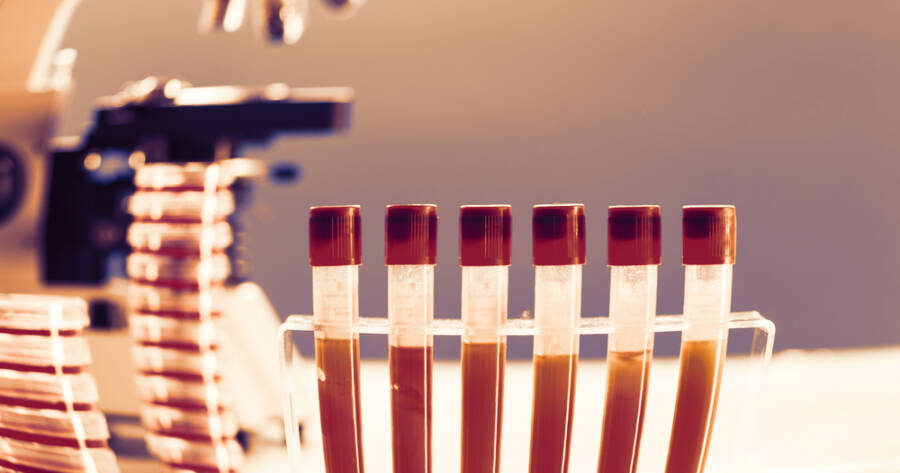If you are a diabetic, you are probably familiar with the concept of A1C levels. If you’re unfamiliar, scroll below to learn more about A1C levels and how to manage them.
What It Is?
A1C tests are blood tests that are designed to check a person’s level of glucose (or blood sugar). This test has a purpose of checking to see if the patient has type 1 or 2 diabetes or prediabetes. Having high blood sugar is also called hyperglycemia, which may be caused by undiagnosed diabetes.
It is important to continually get tested so that the syndrome can be caught and treated in its early stages. If it is addressed and treated quickly after being discovered, you may have a chance of reversing the disease.
A patient’s diagnosis depends on what level of blood glucose is found in the blood. You are considered to be diabetes-free if the test shows levels that are below 5.7%. If you have blood glucose levels that are between 5.7 to 6.4%, it is likely that you have prediabetes. If the test comes back with levels greater than 6.5%, this indicates diabetes. In any case, a second test will be taken to confirm the diagnosis.
Effects of High A1C levels
If your A1C test has shown high levels of glucose in the blood, you are at risk for developing more serious complications. Some of these complications include heart attacks, strokes, kidney problems and circulation problems. If the issue goes untreated, it is also possible that you will start to suffer from damage to the eyes, cardiovascular disease, nerve damage, infections to the skin and gums, as well as problems with the joints.
Symptoms of High A1C
Prediabetes is difficult to spot, as it has no noticeable symptoms. People with type 1 diabetes may show many symptoms. You should get your blood glucose checked if you display signs of: extreme thirst, increased appetite, fatigue, weight loss and urination, blurry vision and/or fruity-smelling breath. In the case of type 2 diabetes the symptoms are very similar to those of type 1. You should get tested if you display symptoms such as: increased thirst and appetite, fatigue and frequent urination, weight loss, or sores that do not heal as they should.
Symptoms of high A1C sometimes go unnoticed because they are also common to other sicknesses. Even if you are not sure that anything is wrong, it is always a good idea to check with a medical professional. This is especially the case if you are over the age of 45 and are overweight, or have high blood pressure, cholesterol, or a family history of diabetes.
Regularly testing your blood is recommended every 3 years even if you are in the ‘normal’ level. If you have prediabetes, it is recommended that you test your blood every one to two years.
Treatments for High A1C levels
The following is a list of medications for diabetes that have been shown to be effective treatments for high A1C levels and lower blood sugar levels in patients:
- Sulfonylureas: Prescribed for patients with type 2 diabetes. It increases the amount of insulin in the body that is made by the pancreases. All medicine for diabetes has side effects. In this case, if food has not been eaten regularly, this medicine may cause low blood sugar.
- Biguanides: Works by decreasing the amount of sugar that the liver produces. It also allows muscle cells to absorb more sugar and decreases the need for so much insulin in the body.
- Meglitinides: Sometimes prescribed to treat type 2 diabetes. Works by increasing how much sugar the pancreases produces. Less likely to cause weight gain or low blood sugar.
- Thiazolidinediones: This medication for diabetes allows muscle and fat to respond better to the action of insulin. As well, the medicine makes the liver reduce its glucose production.
- DPP-4 inhibitors: The way this medicine works is by blocking a particular enzyme (DPP-4) from destroying a hormone called incretin. Incretin is useful in regulating the body’s supply of insulin.
- SGLT2 Inhibitors: Type 2 diabetes is treated with this medicine. They decrease the amount of glucose from your blood by absorbing more into the kidneys.
- Alpha-glucosidase inhibitors: Helps keep the body’s blood sugar levels stable by slowing how fast complex carbs are digested.
- Bile Acid Sequestrants: This particular medicine for treating diabetes works by promoting bile formation, and thereby controlling the amount of glucose in the blood level.

Monitoring your diet is key if you have high A1C levels. Eating the proper balance of food groups may be what stops prediabetes from turning into type 2. Foods that lower A1C levels have a low glycemic index (GI). These foods are good to eat, because they are unlikely to increase blood sugar levels. The GI is a number that correlates to a particular type of carbohydrates, depending on how much they affect a person’s blood sugar levels. A low GI is considered to be 55 or less, and they take longer to be absorbed and digested. These are good, because they do not cause blood sugar and insulin levels to spike. Foods with a GI of 70 or higher are very bad for increasing blood sugar levels.
Carbohydrates with a low GI include:
- Oats (steel cut)
- Wheat (Stone-ground)
- Vegetables that are low in starch (asparagus, beets, Brussels sprouts, eggplant, onions, peppers, etc.)
- Beans
Foods that are bad for diabetics include carbohydrates which quickly turn into energy for the body. This includes:
- Rice
- White bread
- Noodles
- Limit fruits – especially dried fruits, and those high is sugar, like dates and pineapple
Meat is another type of food that can raise glucose levels in the blood. Foods high in protein are the worst for this. For example:
- Fish and shellfish
- Eggs
- Soy products
Eating anti-inflammatory foods is also helpful in managing diabetes and for overall health. For example:
- Turmeric
- Ginger
Finally, if you are trying to keep your blood glucose levels low, do not consume foods high in oil and fat. They will only contribute to the problem.
Although it is a good idea to take initiative and eat healthier, it is always recommended that you speak with your doctor about any major changes that you decide to make to your lifestyle.
To Conclude
Overall, everyone can benefit from a healthier lifestyle, whether or not they have high levels of blood sugar. Just by doing simple life changes such as eating healthier and exercising more, you can reduce your risk for disease. This will also make you more mobile and happy. Cutting out bad influences such as fast food from your life is a good idea. By removing the temptation, you will be less inclined to think about it, and should automatically start moving toward better, healthy choices.



